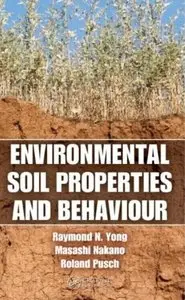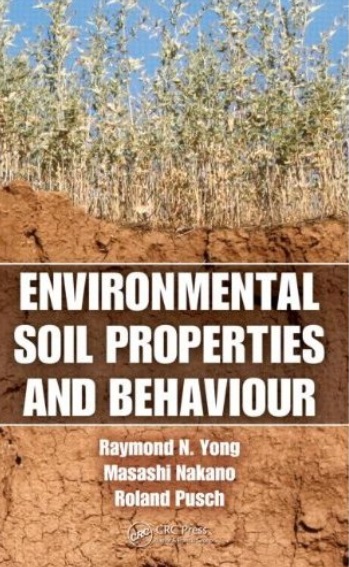Raymond N. Yong, Masashi Nakano, Roland Pusch - Environmental Soil Properties and Behaviour
Published: 2012-03-05 | ISBN: 1439845298 | PDF | 455 pages | 9 MB
From bridges and tunnels to nuclear waste repositories, structures require that soils maintain their design engineering properties if the structures are to reach their projected life spans. The same is true for earth dams, levees, buffers, barriers for landfills, and other structures that use soils as engineered materials. Yet soil, a natural resource, continues to change as a result of natural and anthropogenic stresses. As the discipline of soil properties and behaviours matures, new tools and techniques are making it possible to study these properties and behaviours in more depth.
What Happens to Soil Under Weathering, Aging, and Chemical Stress?
Environmental Soil Properties and Behaviour examines changes in soil properties and behaviour caused by short- and long-term stresses from anthropogenic activities and environmental forces. Introducing new concepts of soil behaviour, soil maturation, and soil functionality, it integrates soil physics, soil chemistry, and soil mechanics as vital factors in soil engineering. The book focuses on environmental soil behaviour, with particular attention to two main inter-related groups of soil–environment issues. The first is the use of soil as an environmental tool for management and containment of toxic and hazardous waste materials. The second is the impact of ageing and weathering processes and soil contamination on the properties and behaviour of soils, especially those used in geotechnical and geoenvironmental engineering projects.
A Transdisciplinary Look at Soil-Changing Processes
To determine short- and long-term soil quality and soil functionality, the authors emphasize the need to be aware of the nature of the stressors involved as well as the kinds of soil-changing processes that are evoked. This book takes a first step toward a much-needed transdisciplinary effort to develop a broader and deeper understanding of what happens to soil and how we can determine and quantify the effect of biogeochemical processes. It offers a timely resource for the study of soil properties and behaviours, effects of environmental changes, and remediation of contaminated soil.



